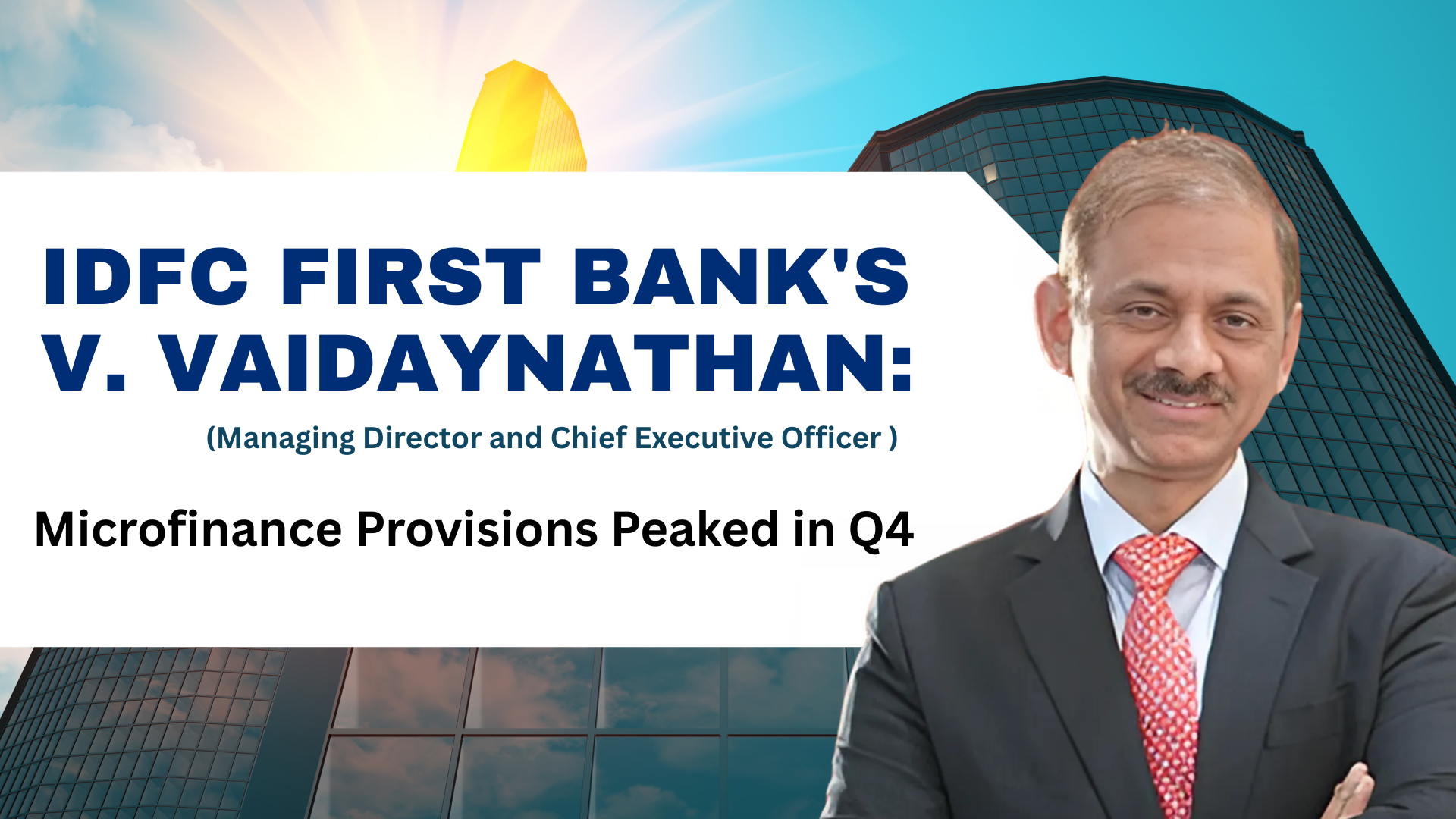Microfinance Provisions Peaked in Q4
V Vaidyanathan, Managing Director and Chief Executive Officer of IDFC First Bank, has said that provisions in the microfinance segment peaked in the fourth quarter of FY25, and the bank expects an improvement in profitability from the first quarter of FY26 onwards. In a video interview with Anupreksha Jain, Vaidyanathan discussed the bank’s financial outlook, strategy on microfinance loans, operational efficiencies, and growth plans.
Profitability Outlook
Despite a year-on-year decline in net profit for another quarter, Vaidyanathan remains optimistic. He confirmed that provisions against microfinance loans, which had been elevated, peaked in Q4FY25 as anticipated. “Provisions should start coming down, and hence profit will start reflecting it. We expect improvement in profit after tax (PAT) from Q1FY26 onwards,” he said. He emphasized that while the microfinance segment remains sensitive, especially considering regulatory interventions at the state level, the bank remains cautious and vigilant.
Microfinance Strategy
Addressing the future of microfinance lending, Vaidyanathan stated that even though risk weights on loans to non-banking financial companies (NBFCs) have reversed from April 1, the bank does not intend to aggressively expand in the microfinance segment. “We have implemented the new MFIN norms, which will likely keep disbursements moderate. After the challenges faced over the past year, it would not be prudent to rush back into this segment. By the end of next year, microfinance is expected to come down to about 3 per cent of our book,” he explained. The bank plans to meet its priority sector lending requirements through other channels.
CASA and Credit/Deposit Ratio Targets
With interest rates easing, IDFC First Bank aims to maintain its current account and savings account (CASA) ratio between 47-48 per cent in FY26. The bank has made significant progress structurally, reducing its credit/deposit ratio from 137 per cent to 94 per cent over six years. “On an incremental basis, we lend only 75-78 per cent of deposits. We want to continue this disciplined approach and finish this financial year strong — similar to the stable era of the late 1980s,” Vaidyanathan noted.
Operational Cost Management
The bank has also taken several measures to contain operational expenses. Operational cost growth, year-on-year, has reduced to 12.2 per cent, down from 21 per cent in Q1, 17 per cent in Q2, and 16 per cent in Q3. “We achieved this by reducing travel, courier, and SMS costs and embracing digital transformation initiatives. We are working like a tech-first bank,” he said.
Capital Raising Plans
Currently, the bank has no plans to raise equity capital. However, it may consider raising funds through Tier-II bonds once interest rates cool. “We are hopeful that once profits start improving and capital buffers strengthen, we will secure an upgrade. We are waiting for better market conditions,” Vaidyanathan said.
Loan Growth Across Segments
On sectoral lending, Vaidyanathan reaffirmed the bank’s commitment to growing across all key segments — retail, agriculture, MSME, commercial, and corporate. “Our RAM (Retail, Agriculture, MSME) books stand at about ₹2.19 trillion, with MSMEs being a significant component. Corporate loans are around ₹24,500 crore,” he mentioned. The bank plans to focus particularly on the commercial segment, targeting businesses with a turnover range of ₹100 crore to ₹750-800 crore. “We are building a specialized team to drive this growth while maintaining a strong focus on asset quality,” he added.
#IDFCFirstBank #Microfinance #ProfitRecovery #CASARatio #LoanGrowth #MSME #DigitalBanking #FinancialTransformation #CorporateStrategy #EconomicOutlook #FinancialServices #BankingIndustry #TierIIBonds #TechBank

